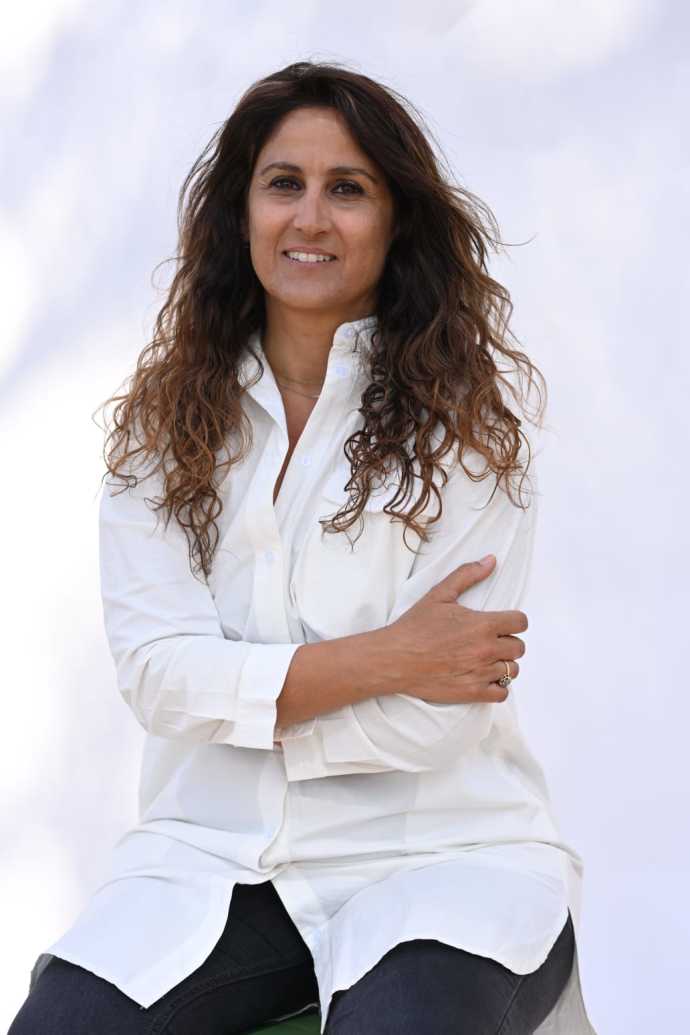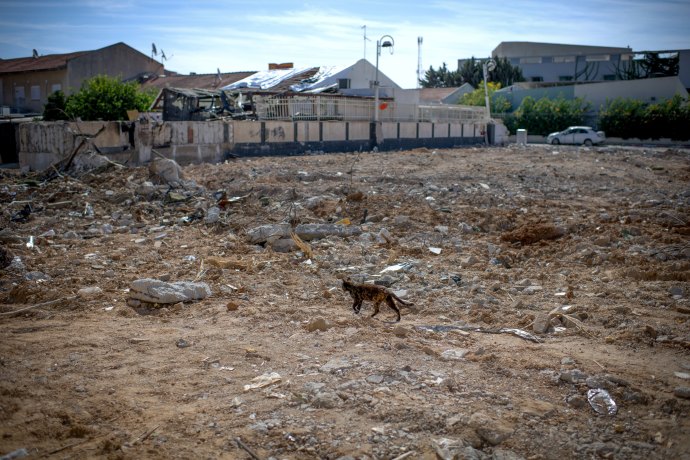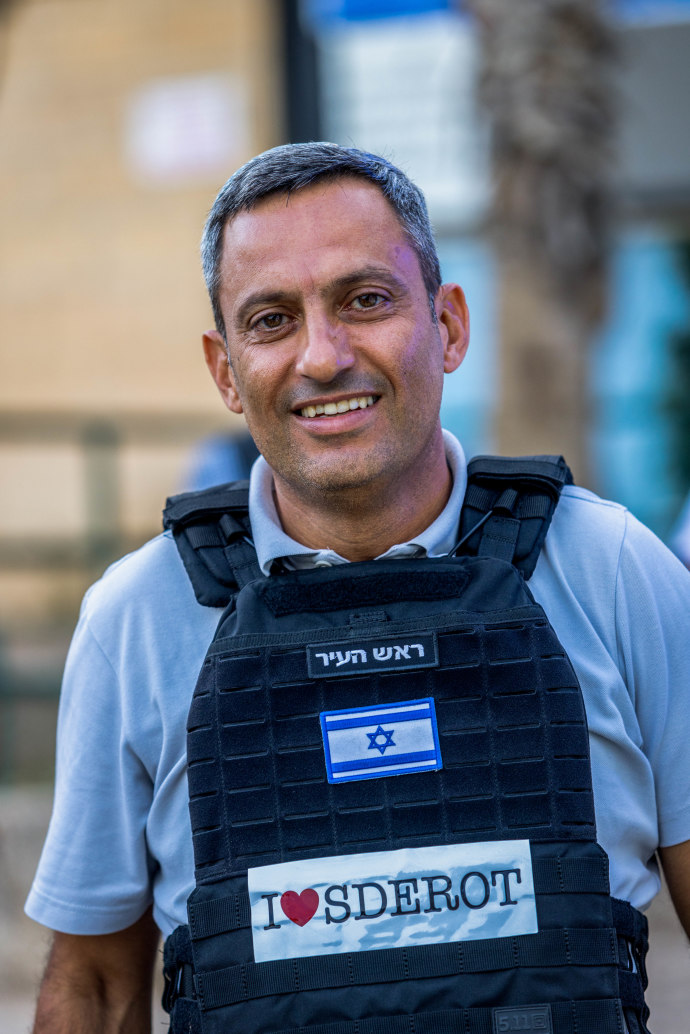On Oct. 7, the Negev town of Sderot (population 30,000) was invaded by close to 200 Hamas terrorists, who massacred 50 civilians and 20 police officers. They murdered civilians on the city’s streets and attacked the police station, occupying it until they were overpowered by the IDF. In light of the constant barrage of rocket fire on the city since the beginning of the war, the IDF evacuated virtually all of the city’s residents in mid-October, most of whom are staying in hotels in Eilat, Jerusalem, and the Dead Sea region.
What is the mental state of the population of Sderot and the Gaza envelope settlements, and in a broader sense, of the Israeli population as a whole? What makes the trauma experienced by Israelis on Oct. 7 different from other traumatic events? This writer recently spoke with Ayelet Shmuel, director of the International Resilience Center in Sderot, to discuss these critical issues.

Sderot is no stranger to trauma. The town is located just one kilometer from the Gaza Strip and has dealt with an ongoing threat of missile attacks for over 21 years. Ninety percent of Sderot residents have experienced symptoms of post-traumatic stress disorder (PTSD), including 70% of the city’s children. The Sderot Resilience Center provides emotional resilience therapy free of charge to all Sderot residents in individual, family, and group settings. In addition, it offers resilience day camps to children of all ages, teaching children how to create personal safe spaces and helping them bolster their inner strength.
The International Resilience Center in Sderot, which Shmuel heads, teaches the methods pioneered in Sderot throughout the world to visiting groups, and shares information and treatment techniques with other communities.
In addition to her work in Sderot, Shmuel helps Jewish communities around the world, assisting them in dealing with the traumas of antisemitism that they have experienced.
Shmuel explains that the war and its accompanying traumas have changed the nature of trauma treatment and the understanding of the subject. “The scale of the trauma has shifted,” Shmuel says. “Usually, it’s the same symptoms and the same traumas, like those that come from rocket attacks. People have a hard time and have acute stress symptoms, and some already have a PTSD diagnosis, so they are more hypervigilant. We are very aware of the scale of it, and we have a Resilience Center that turns into a call center the minute something starts, and accepts people to get treated there. Alternatively, the therapist can meet people in their homes.”

Providing and receiving treatment after Oct. 7 changed drastically. It became dangerous for residents to leave their homes for treatment and for therapists to go to the Resilience Center and offer treatment. Once it became safe for people to leave their homes, the Resilience Center opened up its call center within city hall.
Shmuel adds that because of the increased danger from the rockets and possible terrorist infiltration, teams went out only when it became necessary. “Usually in Sderot, everything is hands-on, and we go to our people. This time, it was dangerous to go and do something about it.”
The war has not only changed the location of treatments but also the nature of trauma treatment itself. “Anyone who understands the world of trauma realizes this is very different,” says Shmuel. First, she explains, the trauma has affected Israelis on a national level. Second, the trauma is part of an ongoing event that has not yet ended. “It’s not like there’s a week of rockets, and then it’s done. We’ve been under fire for [months]. People are not feeling safe, and treating trauma when there is no safe setting is an issue,” she explains.
An added factor has been the public exposure of the images. “When you talk about mental health,” says Shmuel, “you have to talk about the images that you are dealing with. There has been an unbelievable exposure to images of trauma, which is usually very private. The acts themselves are not something anyone in their right mind thought they would have to deal with.”
Shmuel points out that the delay in the arrival of IDF forces at the outset of the Hamas attacks engendered a feeling of abandonment and a breach of trust. “It’s as if no one came to my aid when I needed it,” she says. “In Israel, we have the Iron Dome and the IDF. We are used to things being dealt with immediately, which did not happen.”
While there are many in the world today who support and defend Israel, among those who hate Israel, says Shmuel, “you are thinking that they really want to kill us.”
Another critical issue in trauma is trust. In most cases of trauma, people express their support for the survivors and believe their accounts of what took place. However, in the case of the Oct. 7 massacre, Shmuel points out, there are people in the world who do not believe the accounts of the survivors nor are happy that they survived. “Anyone who deals with trauma, especially sexual trauma, knows how important it is to believe.”
All of these layers, she says, are issues of trauma that have never been dealt with before on this scale.
Shmuel says that finding the best way to handle these trauma processes is a “learning process and a work in progress.” She notes that it also depends on the type of trauma the person experienced. For example, how does one treat people whose children have been taken hostage? “We are not used to dealing with hostage situations, especially when you are talking about small children. The magnitude of this on a mental health platform is huge.”
She summarizes the difficulties of providing treatment for trauma given the circumstances by describing the circumstances of residents of Kibbutz Be’eri, which was ravaged by the Hamas terrorists. “If I am from Be’eri, I am not home. I don’t have a normal setting for the therapy sessions that I am supposed to have. I don’t know what the future will look like because I don’t know if I will return there. I don’t know if my friend is coming back from captivity, and I lost so many people. It is such a complex trauma.”
Shmuel adds that despite the overwhelming trauma, many people can and do recover as part of a natural healing course. She cautions, though, that “We are not there yet because the situation hasn’t changed yet. We are still at war. Many times, after a war you want to take a minute and give yourself a chance to naturally heal.”
She advises people to practice self-awareness in order to be aware of the symptoms of post-trauma and check if there has been a progression or shift in the symptoms that they may have been experiencing. “Check your baseline with how you usually are with what you are seeing right now. Many people can be very resilient,” she says. “Not everyone in the country will need treatment or experience PTSD.”
Ultimately, she says, the most effective form of trauma treatment is on a community level. “It is not enough to go once a week for treatment. You want to create a mindset of resilience and the mindset of awareness in the schools and communities when people have the ability to be in those systems.” Shmuel suggests that if these services are available, doctors and schools will be aware of it and be able to offer it to those in need. “The idea is not to force it on people but to offer it,” she says. At that point, mental health professionals will be able to discern who can deal with these issues and which people will need extra support.
Professionally, she points out, “We are going to have to refine and define the way we do the work and what kinds of tools and methods are working for what cases, and which do not work.” Shmuel adds that the experiences of civilians and military personnel during this war will be an excellent source of research about complex war trauma.
Sitting down with Sderot Mayor Alon Davidi

Alon Davidi has been mayor of Sderot since 2013. A native of Beersheba, Davidi has lived in Sderot for 22 years.
When will the residents of Sderot be able to return to their homes?
We will be thrilled to return to our charming city and continue its development. The question of security depends on the responses of the prime minister, the minister of defense, and the IDF chief of staff. When they say it is safe to live there, then they will allow us to return. At the moment, we have not received clear answers.
What has the Sderot Municipality been doing during this period, and what can people do to help the city?
We are now in the midst of the most difficult period that Sderot and the Gaza envelope settlements have ever experienced. We have been out of our homes for almost two months. Over 30,000 Sderot residents are now living in hotels in Eilat, Jerusalem, Tel Aviv, the Dead Sea, and the Sharon region. The Sderot Municipality has built an educational system for them, including schools, kindergartens, daycare centers, and a resilience center, taking care of their daily needs – beyond food, laundry, and cultural activities.
This has been a tremendous effort. To do this, we must raise a considerable amount of money from the government, private sources, and foundations. We would be delighted to receive any assistance. The help that we are providing to Sderot residents in their hotels preserves the community feeling of our city. We want to strengthen them.
We will need to rehabilitate Sderot when we return. We do not want people to leave the city. On the contrary, Sderot must become the most important symbol of the State of Israel against the terror from Gaza. We hope to find many partners who will help us continue to develop the city. It will require tremendous effort, and the more partners we have, the more solutions we can provide.
What is the most essential thing that needs to be done?
The most important thing is that the IDF must do its work. Everything we are doing and talking about the rehabilitation of the city will happen only if the IDF destroys Hamas and its abilities, and has security control in the Gaza Strip.
If they do that, are you optimistic about the city’s future?
We have a wonderful city with outstanding citizens, excellent educational systems, culture, education, and employment. Sderot’s population has almost doubled in the past seven or eight years. If we have security, we can build; and in doing so, we will rebuild ourselves. – A.R.
